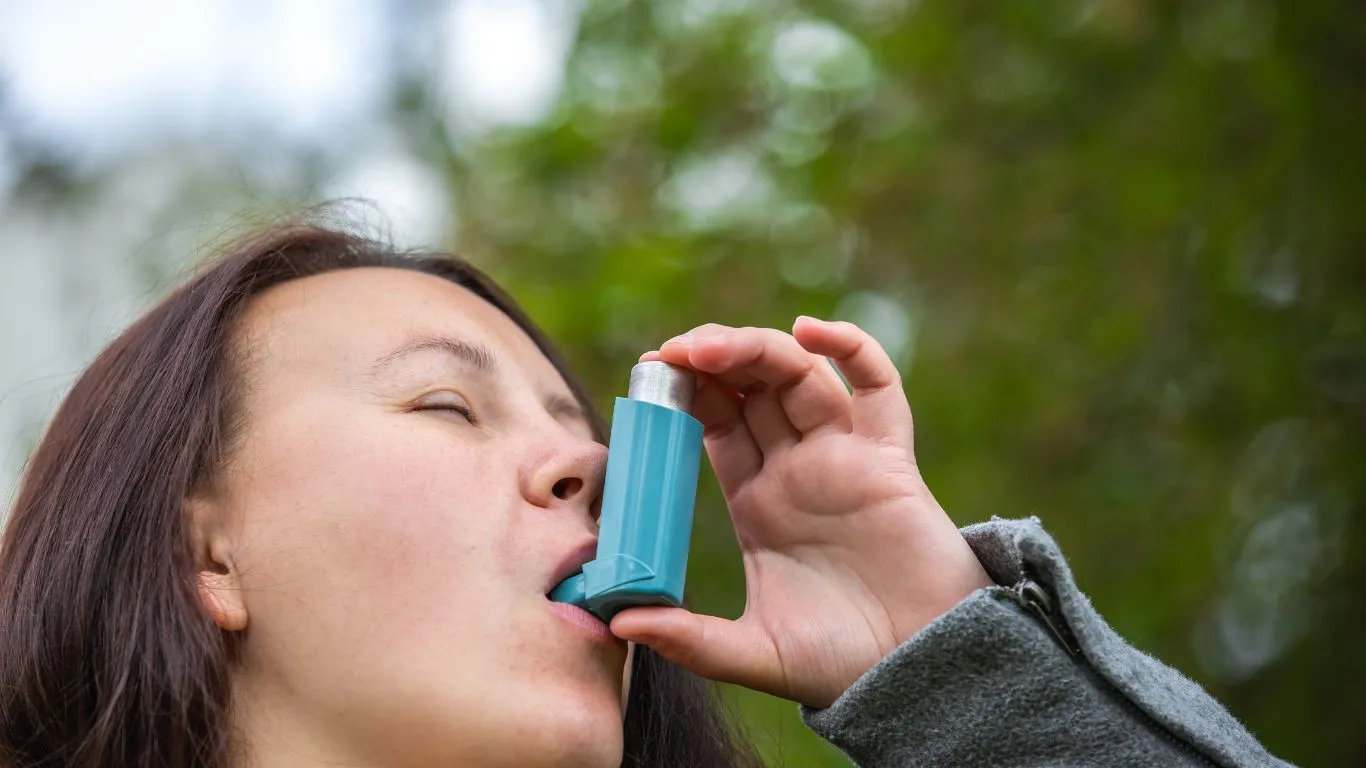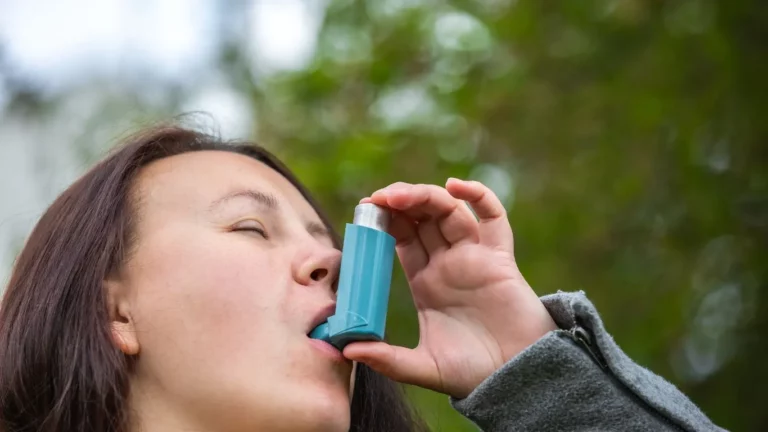Ultimate Guide to Asthma Treatment for Outdoor Exercise
Outdoor exercise can be an amazing way to stay fit, enjoy nature, and boost your mental health. But for those of us who live with asthma, it can feel like a constant battle between wanting to be active and managing our breathing. I know firsthand how challenging it can be to balance outdoor activities with asthma control. In this article, I’ll share my personal experiences and practical asthma treatment tips for outdoor exercise that have helped me—and many of my patients—stay active while keeping symptoms at bay.
Understanding Asthma and Outdoor Exercise

Asthma is a chronic condition that affects the airways, making it difficult to breathe. It causes inflammation and narrowing of the air passages, leading to symptoms like wheezing, shortness of breath, chest tightness, and coughing. These symptoms can be triggered by various factors, including exercise. When you step outside for a jog, a hike, or even just a walk in the park, your asthma may flare up due to changes in temperature, pollen, pollution, or physical exertion.
The Importance of Asthma Treatment for Outdoor Exercise
As an asthma expert, I always emphasize the importance of proper asthma treatment before heading outdoors for exercise. The right treatment can make all the difference between enjoying your workout and struggling to breathe. A well-managed asthma treatment plan is essential for anyone looking to stay active while avoiding exercise-induced asthma flare-ups.
When you plan on exercising outdoors, it’s vital to ensure your asthma is under control. If your asthma is well-managed with medication, you’re more likely to have a positive and safe experience. But if you haven’t been following your treatment plan, or if your symptoms are not under control, outdoor exercise could trigger an asthma attack. That’s why it’s crucial to stay on top of your asthma treatment routine.
Pre-Exercise Preparation: Key to Preventing Asthma Symptoms

One of the best ways to manage asthma during outdoor exercise is by preparing ahead of time. Preparation is key, and it goes beyond just having your inhaler on hand. It involves understanding your body’s needs, the environment you’ll be exercising in, and taking the right steps to ensure your asthma is under control.
Consulting Your Doctor Before Starting an Exercise Routine
If you haven’t already, schedule a visit with your healthcare provider to discuss your exercise goals and asthma treatment plan. Your doctor will help you understand how to manage asthma while being active and may adjust your medication accordingly. Depending on the severity of your asthma, they might recommend specific medications or inhalers to use before exercising.
Timing Your Medication
Timing your asthma medication is also crucial for outdoor exercise. Many people find it helpful to use a bronchodilator inhaler about 15-20 minutes before exercising. This medication helps open your airways, making it easier to breathe during physical activity. It’s important to follow your doctor’s instructions and not overuse your inhaler, as it could lead to unwanted side effects.
Check the Weather and Environmental Conditions
The weather plays a big role in managing asthma symptoms. For example, cold air can trigger asthma symptoms in some people, while hot, humid weather can cause others to struggle. High pollen counts can also be an issue, especially if you have allergic asthma. On days when the weather or environmental conditions aren’t ideal for your asthma, consider adjusting your workout or exercising indoors.
Choosing the Right Type of Outdoor Exercise
Not all outdoor exercises are created equal when it comes to asthma. Some activities are more likely to trigger symptoms than others, especially if they involve intense exertion or exposure to environmental triggers. That’s why it’s essential to choose the right type of outdoor exercise that works for you and your asthma.
Low-Impact Exercises for Asthma-Friendly Workouts
- Walking: One of the most asthma-friendly outdoor activities, walking provides a great cardiovascular workout without putting too much strain on the lungs.
- Swimming: Swimming in a heated pool is excellent for asthma sufferers because the warm, moist air can help prevent airway constriction.
- Yoga: Outdoor yoga sessions, particularly those with a focus on breathing techniques, can be a great way to strengthen your lungs and relax your mind.
Avoiding High-Intensity Activities That Can Trigger Asthma Symptoms
While high-intensity workouts like running, cycling, or intense hiking can be effective forms of exercise, they might not always be the best choice for those with asthma. These activities can increase your heart rate and breathing rate, making it harder to control asthma symptoms. However, if you enjoy these activities, try starting slowly and gradually building your stamina, all while monitoring your symptoms closely. You might also want to incorporate breathing exercises and use your inhaler as a preventive measure.
Managing Asthma Flare-Ups During Outdoor Exercise
Even with the best preparation and asthma treatment plan, flare-ups can still occur. That’s why it’s crucial to know how to handle them if they happen while you’re exercising outdoors. Having an action plan in place can help you stay calm and prevent symptoms from worsening.
Recognizing Early Warning Signs of Asthma Flare-Ups
- Wheezing: A high-pitched whistling sound when you breathe, especially during exhalation, could indicate that your airways are narrowing.
- Chest Tightness: A feeling of pressure or tightness in your chest can be an early sign that your asthma is flaring up.
- Coughing: Persistent coughing, especially after exercise, may indicate an asthma flare-up.
What to Do if an Asthma Attack Occurs
If you experience an asthma attack during outdoor exercise, it’s essential to stop immediately and follow your asthma action plan. This typically involves using your rescue inhaler, finding a safe place to rest, and focusing on slow, deep breaths. If your symptoms don’t improve or worsen, seek medical help right away.
Being active outdoors with asthma may take some planning and precaution, but it’s entirely possible! By following these treatment tips and understanding your body’s needs, you can enjoy exercise and stay healthy without letting asthma hold you back.
Breathing Techniques to Help You Stay Active

As an asthma expert, I can’t stress enough how important it is to incorporate proper breathing techniques into your outdoor exercise routine. Breathing exercises can make all the difference when it comes to managing asthma symptoms, especially during physical exertion. I’ve personally used various techniques to help keep my lungs strong and reduce flare-ups, and I’ve seen how they benefit my patients, too.
How Deep Breathing Can Help
When you’re active outdoors, it’s easy to get out of breath, especially if you’re pushing yourself a little too hard. Deep breathing exercises can help you regulate your breath and avoid hyperventilating, which can trigger asthma symptoms. Inhaling deeply through your nose allows your lungs to fill fully, while exhaling slowly through your mouth helps you expel any extra air. This type of controlled breathing reduces the likelihood of wheezing or coughing during exercise.
Diaphragmatic Breathing for Asthma Control
Diaphragmatic breathing—also known as belly breathing—is a technique I often recommend to my patients. This involves breathing deeply from the diaphragm rather than shallowly from the chest. By engaging the diaphragm, you improve your lung capacity, which can help you better handle physical activity. It’s one of the easiest and most effective ways to improve lung function and reduce shortness of breath.
Here’s how you can try it: Sit or lie down in a comfortable position, place one hand on your chest and the other on your belly. As you breathe in, focus on making your belly rise (not your chest). When you exhale, feel your belly fall. Try this for a few minutes before you head outside to exercise, and make it part of your regular routine!
Staying Active Without Overdoing It
It’s tempting to push ourselves harder and faster, but when you have asthma, it’s essential to listen to your body and recognize when you’ve reached your limit. I’ve learned this through experience—especially when I was starting out with outdoor exercise while managing asthma. There were times I pushed too hard, only to have an asthma flare-up as a result. Now, I’ve learned to pace myself and encourage my patients to do the same.
Gradual Progression is Key
If you’re new to outdoor exercise or you’re just getting back into a fitness routine, it’s essential to start slow. Begin with shorter sessions, and as your body adapts, gradually increase the intensity or duration. You might find that over time, your asthma symptoms improve, and you’re able to exercise for longer periods without difficulty.
The important thing is not to rush the process. For example, if you enjoy running but feel that it’s too intense at first, try walking or light jogging and then build up from there. Remember, any form of physical activity is beneficial for your health, even if it’s a slower pace.
Take Frequent Breaks
One of the things I always recommend to anyone with asthma is to take breaks during exercise. It’s okay to slow down or rest for a few minutes if you start to feel winded. I’ve found that taking breaks can not only help reduce the likelihood of a flare-up but also give you the opportunity to reassess how you’re feeling. Sometimes, just a couple of minutes to catch your breath can make all the difference and allow you to continue with your workout.
Nutrition and Hydration for Asthma Management
It’s not just about what you do during exercise; how you fuel your body before and after physical activity can play a significant role in how well you manage your asthma. A well-balanced diet, combined with proper hydration, supports your overall lung health and keeps your asthma symptoms in check.
What to Eat Before and After Exercise
Eating the right foods before outdoor exercise can help ensure that your body has the energy it needs to perform, without triggering asthma symptoms. I recommend a small meal or snack that includes complex carbohydrates, lean protein, and healthy fats. Foods like whole grains, fruits, vegetables, and nuts provide steady energy without causing spikes in your blood sugar, which can sometimes exacerbate asthma symptoms.
After exercise, it’s essential to replenish your body with a healthy post-workout meal or snack to support recovery. A protein-rich snack, such as a smoothie with Greek yogurt or a handful of nuts, can help your muscles recover while also providing the nutrients your body needs to stay healthy.
Stay Hydrated for Better Breathing
Hydration is another essential component of asthma management. When your body is well-hydrated, it can help keep your airways moist, which makes it easier to breathe. Dehydration can make asthma symptoms worse, leading to throat irritation or increased inflammation. Always carry a water bottle with you during your outdoor exercise sessions and drink regularly to stay hydrated.
Environmental Considerations for Exercising with Asthma

While managing asthma symptoms is largely about following a proper treatment plan, it’s also crucial to consider your environment when exercising outdoors. There are certain factors that can make it harder to breathe, and being mindful of them can help you avoid triggering asthma flare-ups.
Air Quality and Pollution
Air pollution is one of the most common asthma triggers, especially in urban areas. It’s important to be mindful of air quality when you head outside for exercise. I recommend checking local air quality reports or using an air quality app to see if pollution levels are high on the day you plan to exercise. On days when the air quality is poor, it might be best to postpone your outdoor workout or consider an indoor alternative, like swimming or yoga.
Pollen and Allergens
If you have allergic asthma, pollen can be a significant trigger, especially during certain seasons. Keep track of local pollen counts, particularly during spring and summer, and avoid outdoor exercise during peak pollen times. You might also want to consider wearing a hat or sunglasses to protect your eyes and face from allergens. If you must exercise outdoors during high pollen seasons, taking an antihistamine or using a nasal spray before heading out can help reduce symptoms.
Temperature and Humidity
Temperature extremes can also affect your asthma. Cold, dry air can cause your airways to constrict, while hot, humid conditions can make it harder to breathe. On days when the weather is not ideal, consider exercising in the early morning or late evening when temperatures are more moderate. If the temperature is extremely cold or hot, consider switching to an indoor exercise option.
Conclusion: Outdoor Exercise is Possible with Proper Asthma Management
Exercising outdoors with asthma might require some extra planning and consideration, but it’s absolutely possible. With the right asthma treatment, breathing techniques, pacing, and environmental awareness, you can enjoy the benefits of outdoor exercise without putting your health at risk. Remember, everyone’s asthma is different, and it may take some time to find what works best for you. But with a little patience and preparation, outdoor exercise can be a great way to stay active, breathe easy, and feel your best!
Case Studies & Real-Life Examples

To truly understand how asthma treatment for outdoor exercise works in real life, let me share some personal experiences and real-life examples. I’ve seen firsthand how effective planning and proactive management can turn outdoor exercise from a potential challenge to an enjoyable and fulfilling activity.
Real-Life Example #1: Sarah’s Journey to Outdoor Running
One of my patients, Sarah, came to me a few years ago, frustrated that her asthma was preventing her from doing something as simple as going for a run outdoors. She loved running but had an asthma flare-up every time she pushed herself too hard. After working together, we developed a personalized asthma treatment plan for her outdoor workouts.
We started by making sure her asthma medication was properly adjusted, including a rescue inhaler for immediate relief. Sarah also began practicing deep breathing exercises before and during her runs. Over time, she learned to pace herself, starting with shorter runs and gradually increasing her endurance. Within months, Sarah was running outdoors without experiencing asthma symptoms, and she felt a sense of freedom she hadn’t had in years. Her story is a perfect example of how outdoor exercise can be achieved with the right asthma management techniques!
Real-Life Example #2: James’ Outdoor Hiking Experience
James, another one of my patients, was an avid hiker but had trouble hiking in areas with higher altitudes, which often triggered his asthma. We focused on his breathing techniques and improved his conditioning. We also introduced the idea of choosing trails at lower elevations during his initial hikes to allow his body to adjust to the physical demand. Over time, he was able to conquer higher altitudes and now enjoys hiking without worry. His experience shows that asthma management isn’t one-size-fits-all, and customizing the approach can help each person achieve their fitness goals.
Key Takeaways: What You Need to Remember
Before you head outside for your next outdoor exercise session, let’s quickly recap the key takeaways from this article to ensure you have the best chance at success in managing asthma while staying active:
- Always consult with your doctor: Your healthcare provider will help customize your asthma treatment plan, including medication adjustments and preventative measures.
- Be mindful of your environment: Watch out for air quality, pollen, temperature, and humidity levels. These factors can significantly impact your asthma symptoms.
- Take it slow: Start with low-impact exercises and gradually increase intensity. Overexerting yourself too quickly can trigger flare-ups.
- Use breathing techniques: Practice deep breathing and diaphragmatic breathing exercises to help control your breath during exercise.
- Hydrate and fuel properly: Staying hydrated and eating balanced meals before and after exercise will keep you energized and support your asthma management efforts.
- Be prepared: Always carry your inhaler and know when to take breaks to avoid overexertion.
Managing asthma doesn’t mean giving up your love for outdoor exercise—it simply means making smart, informed decisions to ensure you can enjoy physical activity while maintaining your health. Stay patient, and be proactive with your asthma treatment, and you’ll be able to stay active while avoiding flare-ups!
5 FAQs About Asthma Treatment for Outdoor Exercise
Here are some frequently asked questions I get from patients about exercising outdoors with asthma. Hopefully, these answers will help clear up any doubts and make your journey to outdoor fitness a little smoother:
1. Can I exercise outside if I have asthma?
Absolutely! Many people with asthma can enjoy outdoor exercise with the proper preparation. Make sure your asthma is well-controlled, and always have your inhaler with you. Start slow, use breathing techniques, and monitor your symptoms during exercise.
2. When should I use my inhaler before exercising outdoors?
It’s generally recommended to use a bronchodilator inhaler about 15-20 minutes before exercise to prevent asthma symptoms. However, always follow your doctor’s advice and personalize this based on your needs.
3. What outdoor exercises are best for people with asthma?
Low-impact activities like walking, swimming, and yoga are excellent choices for people with asthma. These exercises are gentler on the lungs and can help improve cardiovascular fitness without causing strain on your respiratory system.
4. Can cold air make my asthma worse during exercise?
Yes, cold, dry air can trigger asthma symptoms in many individuals. If you’re planning to exercise outdoors in cold weather, try covering your nose and mouth with a scarf to warm up the air before it enters your lungs. Consider breathing through your nose instead of your mouth to avoid dry air entering your airways.
5. What should I do if I experience an asthma attack during outdoor exercise?
If you experience an asthma attack, stop exercising immediately. Use your rescue inhaler, rest, and focus on slow, deep breaths. If your symptoms don’t improve or worsen, seek medical help as soon as possible.
Bonus: Additional Resources or DIY Tips
If you’re looking for more ways to manage asthma while staying active outdoors, here are a few additional resources and DIY tips:
- Asthma Action Plan: Work with your doctor to create a detailed asthma action plan. This will include steps to take before, during, and after exercise and will help you stay on top of your asthma management.
- Breathing Exercises App: There are various apps available to help guide you through breathing exercises. These can be a handy tool before, during, and after exercise to keep your lungs strong and reduce flare-ups.
- Outdoor Exercise Journal: Keep a journal of your outdoor exercise sessions. Track your asthma symptoms, weather conditions, and how your body responds to different types of exercise. This can help you find patterns and improve your asthma management over time.
Appendix: References, Disclaimer, and Call to Action
Throughout this article, I’ve shared my professional expertise and personal experiences in managing asthma during outdoor exercise. I always encourage anyone with asthma to work closely with their healthcare provider to develop a customized asthma treatment plan tailored to their needs.
Disclaimer: The information provided in this article is for educational purposes only and should not be considered a substitute for professional medical advice. Always consult with your healthcare provider before starting any new exercise regimen or making changes to your asthma treatment plan.
Call to Action: If you’re ready to take control of your asthma and enjoy outdoor exercise safely, start by consulting with your doctor to create a personalized asthma management plan. With the right approach, you’ll be able to stay active and feel confident in your ability to manage your asthma symptoms!

Bianca Nala is a compassionate Nurse Practitioner with a strong background in primary and respiratory care. As a health writer for Healthusias.com, she combines her clinical expertise with a talent for clear, relatable storytelling to help readers better understand their health. Bianca focuses on topics like asthma, COPD, chronic cough, and overall lung health, aiming to simplify complex medical topics without losing accuracy. Whether she’s treating patients or writing articles, Bianca is driven by a single goal: making quality healthcare knowledge accessible to everyone.






